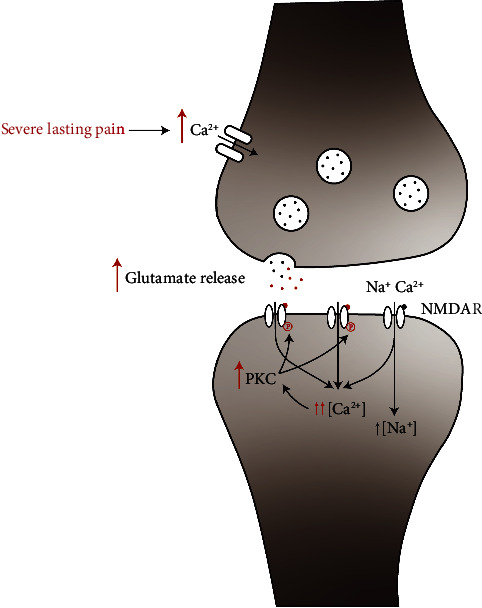Figure 2.

Schematic illustration of the role of NMDARs in central sensitization. In a physiological state, a noxious stimulus can be transmitted by glutamate and NMDARs. However, when suffering severe lasting pain (the red procedure), a constant drive of noxious afferent input leads to a flow of massive calcium ions into the presynaptic neurons, followed by increased release of glutamate into the synaptic cleft and more intense activation of NMDARs in postsynaptic neurons. More calcium entry causes activation of PKC and results in the phosphorylation of NMDARs. As a consequence, the magnesium block is decreased and channel opening time is prolonged.
